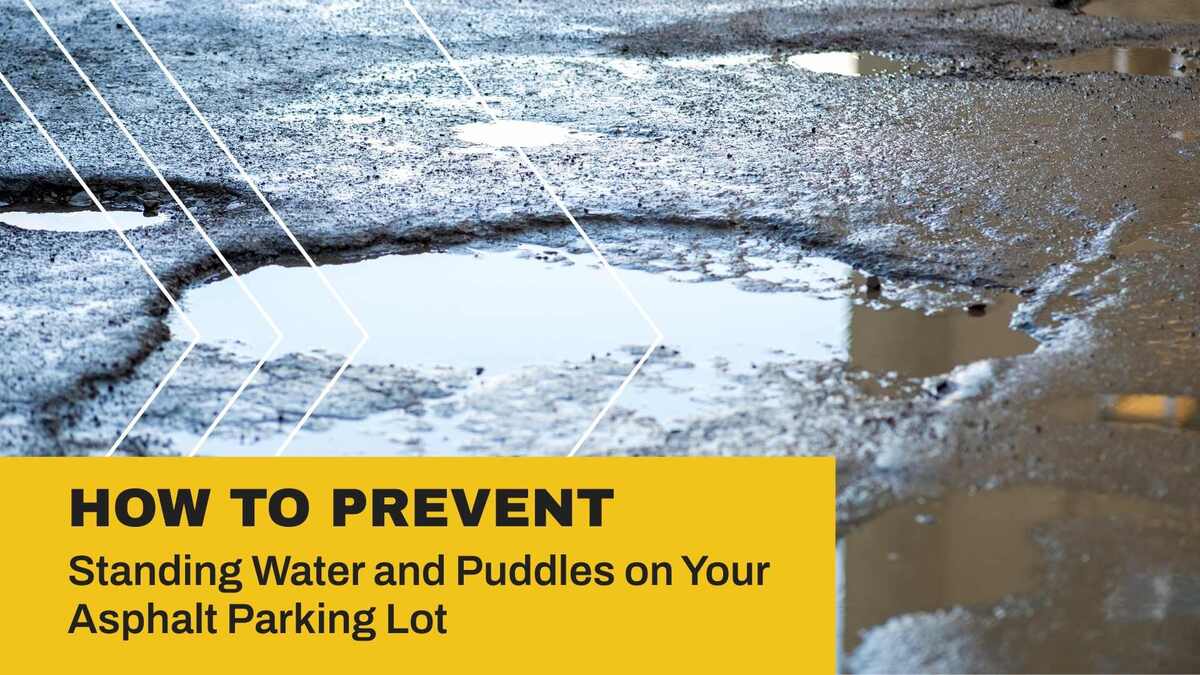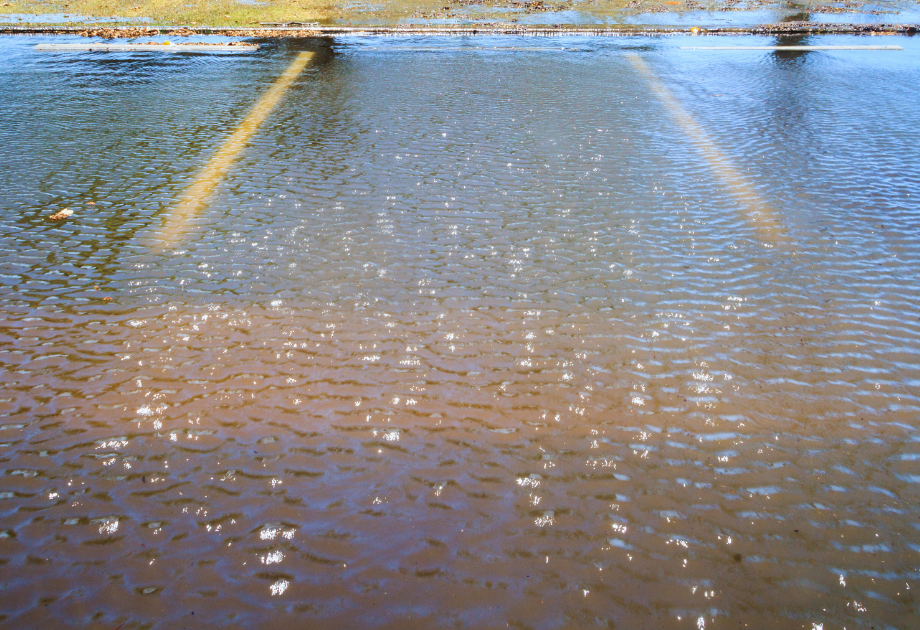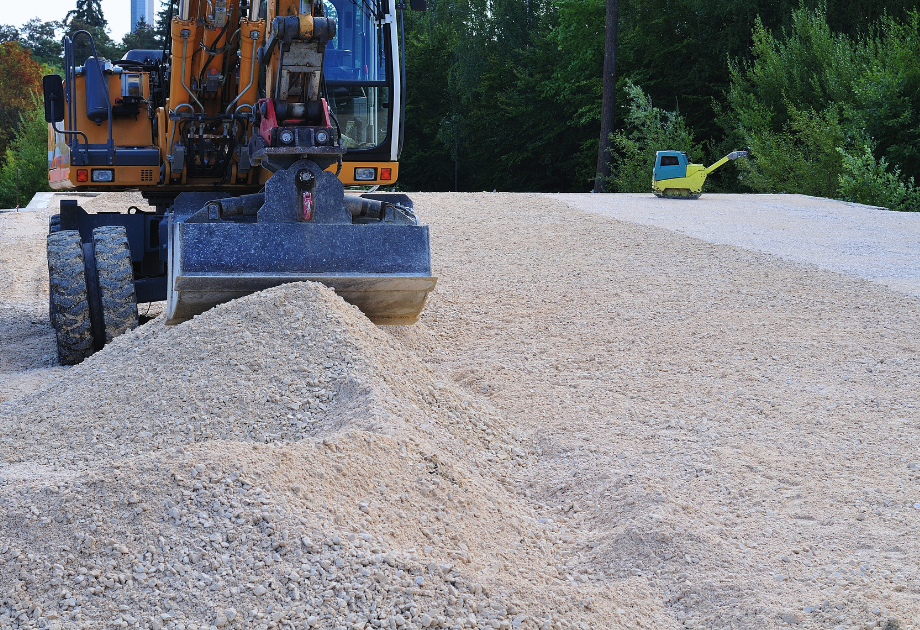How to Prevent Standing Water and Puddles on Your Asphalt Parking Lot
How to Prevent Standing Water and Puddles on Your Asphalt Parking Lot

Melissa manages a mid-sized office complex in Cincinnati. After several days of rain, her tenants began sending photos of ankle-deep puddles in the parking lot. Complaints were growing, and she noticed the issues too: slick crosswalks near the entrance, cars parking farther away from certain rows, and a lot that looked neglected. When she traced the problem areas, she saw clogged drains and shallow depressions where water gathered after every storm. Melissa realized that addressing the issue now would prevent both safety risks and mounting repair bills.
Maybe Melissa’s story sounds familiar to you.
Her situation is common. Many commercial properties deal with standing water, but it doesn’t have to be a recurring frustration. Understanding what causes water pooling and how to correct it can protect your investment and restore your lot’s professional appearance.
Why You See Puddles Forming on Asphalt Parking Lots
When your lot was first constructed, it was designed with slope and drainage in mind. A proper asphalt drainage plan directs water toward inlets and moves it off the property. Over time, though, even small disruptions in slope, surface, or infrastructure cause water to linger. A storm drain may clog, pavement may settle, or the original design may not have accounted for the demands of a busy commercial lot.
The result is water that sits longer than it should, creating frustration for everyone who uses the lot. What feels like an isolated inconvenience is actually a warning sign that your pavement or drainage system needs attention.

Signs Your Parking Lot Drainage Needs Work
When you first notice puddles, it might feel like an isolated annoyance. But as you look closer, you start to realize there are other signals your drainage system is struggling. Maybe you’ve watched water linger in the same corner of the lot after every storm. Perhaps you’ve noticed tenants or visitors walking around certain rows to avoid the soggiest spots. In some cases, you may even see the pavement itself beginning to show stress where water has been sitting too long.
These are warning signs that your lot is no longer performing the way it should, and they become clearer once you know what to look for.
Low Spots That Collect Water
Over years of traffic, asphalt surfaces naturally compress. You might see shallow depressions, often called birdbaths, where water consistently gathers after rainfall. These do not improve with time.
Drains That Fail to Keep Up
Look at your parking lot drain during a storm. If water flows around it instead of into it, or if debris is blocking the inlet, your system is not capturing runoff the way it should.
Pavement That Breaks Down Faster Than Expected
You may spot cracks spreading faster than they should or notice small potholes forming in areas where puddles tend to linger. Water that seeps beneath the surface is what causes potholes in the first place, and once they start to form, the surrounding pavement quickly weakens. Left unchecked, those small openings expand into larger problems that demand repair sooner than expected.

Why Standing Water Creates Bigger Problems
At first, the puddles on your lot might only have drawn an occasional complaint. But over the following months, the problems became harder to ignore. A tenant reported slipping near the crosswalk. You noticed a small cluster of cracks spreading faster than expected near the low spots. Even visitors started mentioning how the lot looked poorly maintained. What started as standing water was now leading to bigger issues that affected both safety and the long-term health of your pavement.
These challenges tend to show up in three areas.
Safety Concerns
Puddles create risks for both vehicles and pedestrians. Cars are more likely to skid or hydroplane. Walkers are more likely to slip. The liability of accidents on your property is one of the strongest reasons to prioritize well-planned asphalt drainage systems.
Faster Pavement Damage
Moisture works its way into small cracks, weakening the surface from below. When temperatures drop, the freeze-thaw cycle expands the damage, making cracks larger and creating potholes. Without intervention, repair costs grow quickly.
Negative Impressions and Added Costs
Pooling water makes your property appear neglected. Tenants, customers, and visitors notice when pavement looks unmaintained, and those impressions reflect on the businesses inside the building. Temporary patches only go so far, which is why many property managers turn to professional commercial drainage services that address the underlying problem.

How You Can Fix Drainage Issues
After dealing with months of complaints and watching the pavement decline, you decide it’s time to take action. You start by walking the lot with a closer eye, noting where the surface has settled, which drains are blocked, and how water moves during a heavy storm. The more you look, the clearer it becomes that fixing drainage is not a matter of waiting for the water to disappear. It requires a plan.
Property managers who take a proactive approach usually start with three areas of focus.
Regrade the Surface
If the slope of your lot no longer directs water to the right places, adjustments to the grading can make a significant difference. Re-sloping restores the intended runoff pattern and eliminates many low spots.
Upgrade Drainage Systems
Adding new structures such as trench drains or catch basins, or resizing existing inlets, helps capture water more effectively. Placement is just as important as size. Drains must align with the natural flow of water across the property.
Maintain What You Have
Even the best-designed commercial drainage system will fail if it is clogged. Routine cleaning and inspections keep inlets clear of leaves, trash, and debris so water can flow freely.
What You Gain by Fixing Drainage Problems
Once the work is complete, the difference is easy to see. After a heavy rain, the lot drains quickly, leaving behind dry, usable spaces instead of scattered puddles. Tenants and visitors stop mentioning water problems, and the complaints in your inbox disappear. You notice that the pavement itself is holding up better because water is no longer sitting in the same weak spots. Even the property looks more professional, with a clean surface that gives people confidence as they arrive.
With proper asphalt drainage systems, you gain:
- Dry, safe surfaces after storms
- Longer pavement life and fewer repairs
- Lower long-term maintenance costs
- A professional appearance that makes a stronger impression
Partner with JK Meurer Paving for Lasting Results
If you have been dealing with puddles on your property, you know how quickly a small inconvenience can grow into a larger problem. You’ve seen the complaints, noticed the wear on your pavement, and realized that standing water does not go away on its own. The good news is there are solutions that restore both safety and curb appeal while protecting your investment.
At JK Meurer Paving, we specialize in diagnosing asphalt drainage problems and designing long-term solutions. Our team evaluates grading, installs or improves parking lot drainage systems, and provides paving services that hold up under the demands of commercial and municipal properties. With a plan-first approach, we keep projects on schedule, anticipate challenges before they occur, and deliver surfaces that last.
When you partner with us, you gain more than a dry lot. You gain confidence that your property is safe, professional, and built to perform for years to come.
Don’t let water shorten your pavement’s lifespan. Schedule a drainage consultation today.

